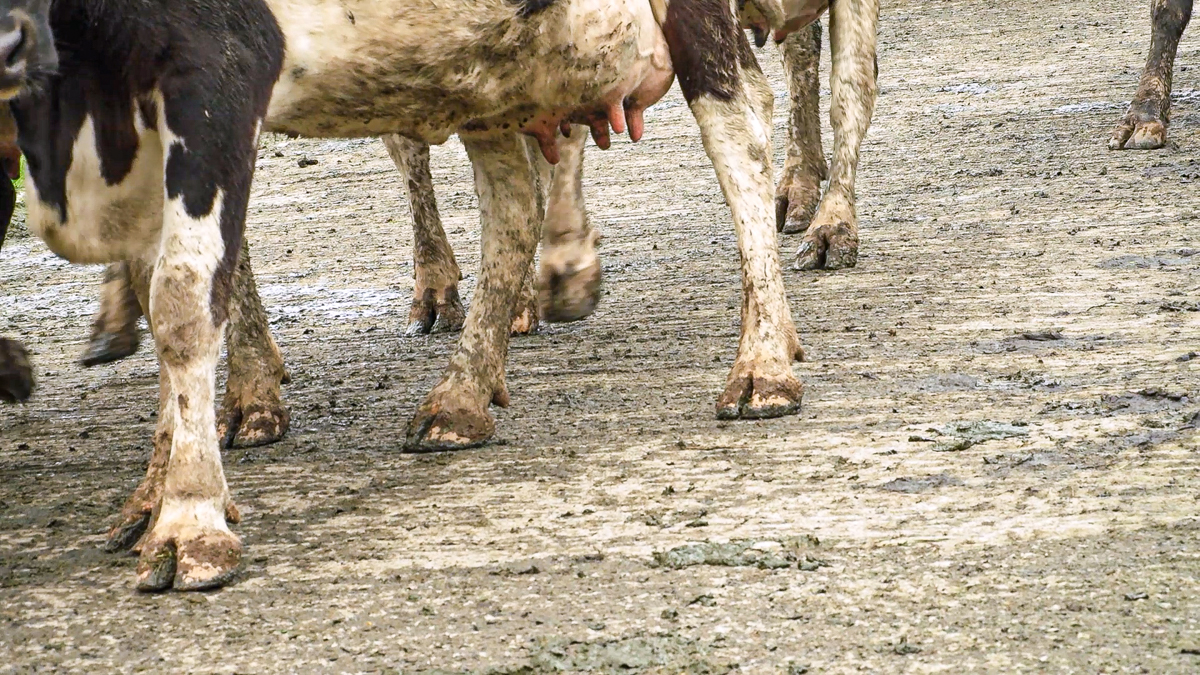Mortellaro is an issue that many cattle farmers have to deal with; it is a stubborn hoof disease that can occur on all cattle farms.
Also known as digital dermatitis or Italian footrot, once it arrives onto your farm it is often hard to control and almost impossible to eliminate.
It usually presents as a lesion on the claw skin of the hoof, located between where both the claws merge.

The disease will appear as a red (strawberry-like) lesion that is very painful and will often have a bad smell.
Mortellaro
Mortellaro disease is caused by a mixture of bacteria, including:
- Bacteroides nodosus;
- Treponemes;
- Fusobacteria necrophorum;
- Anaerobic bacteria.
The environment in which the cows live also plays a major role. You should ensure the cubicle-shed floor and passageways are regularly scraped to remove manure.
The disease is more commonly seen in housed herds with poor hygiene and wet conditions.
If the disease comes onto the farm it can be easily spread through bacteria in the manure.
There are several factors that aid in the transmission of the disease between cows, i.e., buying in cows from a herd that may have an issue with mortellaro.
Cows that suffered from metabolic disorders (negative energy) and irregular hoof trimming can have a higher risk of mortellaro disease.
Treatment/control
Regular foot bathing, with a copper sulphate product is the most effective way of treating and controlling mortellaro within herds.
When foot bathing, you should try remove manure or dried bedding material and dry out the lesion before foot bathing cows, in order to maximise the effectiveness of the product.
The use of salicylic acid can also be effective at controlling mortellaro. Salicylic acid has a low pH, which makes it a bactericide.
Salicylic acid comes in a powder and can be placed directly on the lesion, using a bandage to keep it in place for a number of days.
Prevention
The most common way for it to enter into herds is through purchased-in animals, so before animals are brought into a farm, determining the health status of that herd is advised.
Organise an inspection with your vet and/or hoof-pairer to examine your cows’ feet for the disease. This could be completed after drying off.
The disease is more prevalent in cows when they are housed, so foot bathing during this period is recommended on farms where mortellaro is an issue.
You should ensure you apply the correct amount of solution to the footbath, in line with manufacturer recommendations.
If a large number of cows are entering the footbath, you should consider emptying and refilling the bath to ensure each cow gets sufficient contact with the solution.
It is also important that cows, during the housing period, are not overcrowded, and that the cubicle shed has at least one cubicle/cow.
Locomotion or mobility scoring should also be used to detect cows with mobility issues.
Most importantly, passageways should be kept clean and the contact between cows and manure should be minimised.
